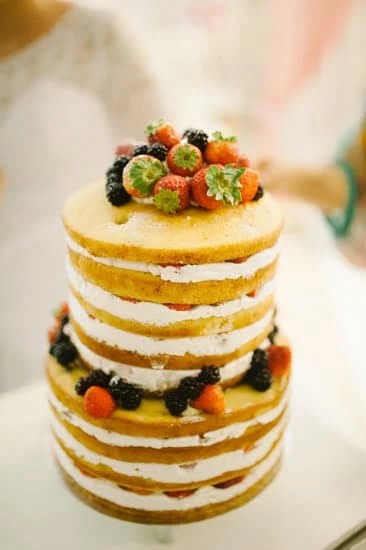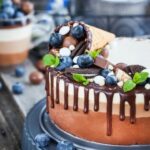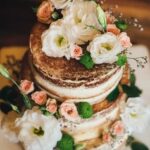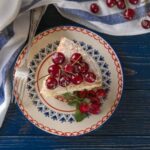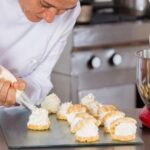Are you looking to elevate your baking skills and impress your friends and family with beautifully decorated cakes? If so, learning how to decorate a buttercream cake is an essential skill to have in your repertoire.
The art of buttercream cake decorating allows bakers to create stunning designs, from simple swirls to intricate patterns, using just a few basic tools and ingredients. In this article, we will explore the fundamentals of buttercream cake decorating, including essential tools and materials, selecting the right buttercream recipe, and mastering various decorating techniques.
Understanding the basics of buttercream cake decorating is the key to creating visually appealing and delicious desserts. Whether you’re a baking novice or an experienced pastry chef, mastering the art of buttercream cake decorating can take your creations to the next level. From choosing the right consistency of buttercream to perfecting piping techniques, there are several foundational principles that will set you on the path to success.
In addition to discussing essential tools and materials for decorating a buttercream cake, we will also explore prepping the cake for decorating, adding colors and flavors to buttercream for creative designs, troubleshooting common decorating problems, and putting those finishing touches that make your creation stand out. By understanding these basics, you’ll be well-equipped to create beautiful buttercream cakes that are sure to impress any audience.
Ready to get started on your journey into the world of buttercream cake decorating? Let’s dive in.
Essential Tools and Materials for Decorating a Buttercream Cake
Piping Bags and Tips
When it comes to decorating a buttercream cake, having the right tools is essential. Piping bags and tips are crucial for creating intricate designs and patterns on your cake. Make sure to have a variety of piping tips on hand, such as round tips for outlining and writing, star tips for borders and rosettes, and petal tips for floral designs.
Offset Spatula
An offset spatula is another essential tool for decorating a buttercream cake. This tool allows you to smoothly spread the buttercream onto the cake’s surface and create perfectly even layers. It also helps in achieving clean edges and sharp corners for a professional-looking finish.
Turntable
A turntable is a game-changer when it comes to decorating cakes. It allows you to easily rotate the cake while working on it, ensuring even coverage and smooth decorations. This tool is especially helpful when using piping techniques or creating intricate designs on the sides of the cake.
Bench Scraper
A bench scraper is useful for achieving smooth and clean sides on your buttercream cake. It can be used to straighten the edges of the cake, scrape off excess frosting, and create sharp angles. This tool is particularly handy for achieving a polished look on your finished creation.
Having these essential tools at your disposal will greatly aid in mastering how to decorate buttercream cakes effectively by ensuring you have everything you need to bring your creative visions to life.
Selecting the Right Buttercream Recipe for Decorating
When it comes to decorating a buttercream cake, the first step is selecting the right buttercream recipe. There are several types of buttercream to choose from, including American buttercream, Swiss meringue buttercream, and Italian meringue buttercream. Each type has its own unique texture and flavor profile, so it’s important to consider which one will work best for your specific cake decorating needs.
American buttercream is often the go-to choice for cake decorators due to its simplicity and easy preparation. It is made with powdered sugar, butter, and flavorings, making it stable and easy to work with.
On the other hand, Swiss meringue buttercream is lighter and less sweet, as it is made by whipping egg whites and sugar before adding in the butter. Finally, Italian meringue buttercream involves pouring a hot sugar syrup into whipped egg whites before adding in the butter for a smooth and stable frosting.
In addition to considering flavor and texture, it’s also important to think about the climate you’ll be working in. Warmer temperatures may cause certain types of buttercream to become too soft or melt easily, so selecting a recipe that can withstand different environmental conditions is crucial for successful cake decorating.
| Buttercream Type | Characteristics |
|---|---|
| American Buttercream | Easy to prepare; stable; sweet flavor |
| Swiss Meringue Buttercream | Lighter texture; less sweet; requires more preparation time |
| Italian Meringue Buttercream | Smooth texture; stable; involved preparation process |
Preparing the Cake for Decorating
Leveling the Cake Layers
Before you can start decorating your buttercream cake, it’s important to ensure that your cake layers are level. Uneven or domed cake layers can make it challenging to create smooth and even buttercream decorations. Use a serrated knife or a cake leveler to carefully trim the tops of each layer until they are flat and even.
Applying a Crumb Coat
Once your cake layers are leveled, it’s time to apply a crumb coat. A crumb coat is a thin layer of buttercream that seals in any loose crumbs on the surface of the cake, preventing them from getting mixed into the final layer of buttercream frosting.
Using a offset spatula, spread a thin layer of buttercream over the entire outside of the cake. This initial layer doesn’t need to be perfect, as its main purpose is to trap any crumbs before adding the final layer of frosting.
Chilling the Cake
After applying the crumb coat, it’s crucial to chill the cake before adding additional decorations or the final layer of buttercream. Placing the cake in the refrigerator for at least 30 minutes allows the crumb coat to set and creates a firm surface for adding more buttercream or fondant decorations. Chilling also makes it easier to achieve smooth and clean lines when working with buttercream.
By following these steps for preparing your cake for decorating, you’ll set yourself up for success in creating stunning buttercream cake designs. These preparations ensure that your final decorations will adhere properly and look polished, making your finished creation truly stand out.
Techniques for Creating Beautiful Buttercream Cake Designs
When it comes to decorating a buttercream cake, there are several techniques that can be used to create beautiful and intricate designs. Piping is a popular method that involves using a piping bag and different tips to create various shapes and patterns on the cake. Whether it’s simple borders, intricate flowers, or personalized messages, piping allows for endless creativity.
Swirling is another technique that can be used to decorate a buttercream cake. This involves using a spatula or offset spatula to create swirls and patterns in the buttercream. By swirling different colors together or creating unique textures, this technique adds an artistic touch to the cake’s appearance.
In addition to piping and swirling, spatula techniques can also be utilized for decorating a buttercream cake. This involves using a palette knife or straight spatula to create smooth finishes and textured designs on the cake. Spatula techniques are great for achieving a more rustic or natural look, adding depth and dimension to the buttercream.
Overall, mastering these techniques for creating beautiful buttercream cake designs takes practice, patience, and precision. Experimenting with different tools and methods will help you develop your own unique style of decorating while also honing your skills on how to decorate buttercream cakes. With time and dedication, you’ll be able to create stunning buttercream cake designs that are sure to impress any crowd.
Adding Colors and Flavors to Buttercream for Creative Cake Decorating
When it comes to decorating a buttercream cake, adding colors and flavors to the buttercream can take your dessert to the next level. With the right techniques and a creative touch, you can create stunning designs and delicious combinations that will wow your friends and family. Here are some tips for adding colors and flavors to buttercream for creative cake decorating:
- Coloring Buttercream: To achieve vibrant colors, use gel food coloring instead of liquid food coloring. Gel food coloring is more concentrated, so it won’t change the consistency of your buttercream. Start with a small amount and gradually add more until you reach the desired color.
- Flavoring Buttercream: Enhance the flavor of your buttercream by adding extracts or other flavorings such as cocoa powder, instant coffee, or fruit purees. Start with small amounts and adjust to taste, keeping in mind that some flavorings may also affect the consistency of the buttercream.
Experimenting with different color combinations and flavor profiles can result in unique and irresistible buttercream cakes that are sure to impress. Whether you’re going for a pastel rainbow effect or a rich chocolate hazelnut flavor, the options are endless when it comes to customizing your buttercream.
Remember that practice makes perfect when it comes to getting the right balance of color and flavor in your buttercream. Don’t be afraid to get creative and try out new combinations – that’s what makes decorating buttercream cakes so much fun. Mastering the art of coloring and flavoring buttercream will not only make your cakes visually stunning but also incredibly delicious.
Tips for Achieving Professional-Looking Buttercream Cake Decorations
After mastering the essential techniques and tools for decorating a buttercream cake, it’s time to focus on achieving professional-looking results. Whether you’re a beginner or have some experience in cake decorating, there are several tips to keep in mind to elevate your buttercream creations to the next level.
First and foremost, one of the key factors in creating professional-looking buttercream cake decorations is consistency. This applies to both the texture of your buttercream and the evenness of your design. Make sure your buttercream is at the right consistency for piping or spreading, and practice creating smooth and even designs. Consistency in pressure while piping or smoothing with a spatula will also contribute to a more polished appearance.
Another tip is to pay attention to details. Small imperfections can detract from the overall look of your buttercream cake, so take the time to fix any uneven spots, air bubbles, or smudges. Using tools like offset spatulas and bench scrapers can help achieve clean lines and smooth surfaces. Additionally, practicing precision in piping techniques will enhance the professional appearance of your designs.
Lastly, don’t underestimate the power of practice and patience when it comes to achieving professional-looking buttercream cake decorations. It takes time and effort to develop a steady hand, perfect your technique, and troubleshoot any issues that may arise. Embrace each decorating session as an opportunity to improve and refine your skills.
By keeping these tips in mind and dedicating yourself to honing your craft, you’ll be well on your way to creating stunning buttercream cake decorations that rival those of professional bakers.
Whether you’re using classic vanilla or experimenting with unique flavors such as raspberry or lavender, adding colors and flavors is an exciting way to enhance your buttercream cake decorations. The color palette you choose for your buttercream can set the tone for the entire design – whether it’s pastel hues for a whimsical baby shower cake or bold shades for a festive celebration.
To add color and flavor to your buttercream, start by selecting high-quality gel food coloring in vibrant shades that won’t dilute the texture of your frosting. Remember that a little goes a long way with gel food coloring, so start with small amounts and gradually add more until you achieve the desired hue.
For incorporating flavor into your buttercream, options like pure extracts (vanilla, almond) or fruit purées can infuse delicious taste without compromising the consistency of the frosting.
When working with multiple colors for intricate designs or ombre effects on your cakes, consider using separate piping bags fitted with different tips for each color. This will allow you to easily switch between shades without having to clean out one bag each time – saving time and maintaining flow during decoration.
Troubleshooting Common Buttercream Cake Decorating Problems
Decorating a buttercream cake can be a fun and rewarding experience, but sometimes problems may arise that can cause frustration. It’s important to troubleshoot these common issues so that you can achieve a professional-looking result. Here are some common buttercream cake decorating problems and solutions:
1. Cracking: Cracking in the buttercream can occur due to temperature changes or overworking the buttercream. To prevent cracking, make sure your cake is completely cool before applying the buttercream. Additionally, avoid overmixing the buttercream, which can incorporate too much air and cause it to crack as it sets. If you notice cracking after decorating, try smoothing out the surface with a warm offset spatula or piping more buttercream over the cracks.
2. Bulging: Bulging happens when there is excess filling between cake layers, causing the buttercream to bulge out from the sides of the cake. To prevent bulging, make sure to properly level and fill your cake layers, leaving a small gap between the filling and the edge of the cake. Chilling the filled cake before applying a crumb coat can also help prevent bulging.
3. Smoothing: Achieving a smooth finish on a buttercream cake can be challenging, but there are techniques that can help. After applying a crumb coat and chilling the cake, use a bench scraper or offset spatula dipped in hot water to smooth the buttercream surface. You can also use Viva paper towel or parchment paper to gently press against the chilled buttercream and achieve a smooth finish.
By understanding how to identify and solve these common issues in buttercream cake decorating, you can create beautiful and professional-looking creations without any hassle.
Finishing Touches and Presentation
When it comes to buttercream cake decorating, the finishing touches and presentation are what truly make your creation a showstopper. Whether you’re preparing a cake for a special occasion or simply want to impress your friends and family, there are a few key techniques and tips that can elevate your buttercream cake to the next level.
One of the most important aspects of making your buttercream cake stand out is paying attention to detail. This means ensuring that your cake is smooth and even, with crisp edges and clean lines. Using a bench scraper and offset spatula can help you achieve this polished look, allowing you to create a professional finish that will impress anyone who sees or tastes your creation.
In addition to a smooth surface, consider adding decorative elements such as fresh flowers, edible glitter, or chocolate shavings to enhance the overall appearance of your buttercream cake. These finishing touches can add visual interest and texture to your creation, making it even more appealing to the eye.
Finally, don’t forget about the presentation of your buttercream cake. Choosing an elegant cake stand or platter can instantly elevate the look of your dessert, making it appear more sophisticated and inviting. By paying attention to these details and taking pride in your presentation, you can transform your buttercream cake into a true work of art that will leave a lasting impression on all who have the pleasure of enjoying it.
Conclusion
In conclusion, buttercream cake decorating is not just a culinary skill, but also an art form that allows for endless creativity and personal expression. From mastering the basics of understanding buttercream consistency and texture to learning advanced techniques like piping and swirling, the process of decorating a buttercream cake is both challenging and rewarding. As you explore the world of buttercream cake decorating, remember to be patient with yourself and practice consistently to perfect your skills.
It’s important to have the right tools and materials on hand when decorating a buttercream cake, as they can greatly impact the quality of your final product. Whether it’s selecting the perfect piping tips or investing in high-quality food coloring gels, having the essential items at your disposal will make the decorating process smoother and more enjoyable. Additionally, choosing the right buttercream recipe for your specific cake is crucial in achieving professional-looking results.
As you experiment with different colors, flavors, and design techniques, don’t be afraid to push your creative boundaries and think outside the box. Adding unique flavors like citrus or espresso to your buttercream can elevate the taste of your cake, while incorporating vibrant colors can enhance its visual appeal. Remember that practice makes perfect-so keep honing your skills in order to create stunning buttercream cakes that are sure to impress.
In summary, whether you’re a seasoned baker or a beginner looking to try something new, mastering how to decorate a buttercream cake opens up a world of possibilities in the realm of baking and pastry arts. So go forth with confidence, armed with knowledge from this guide-and remember that with practice and dedication, you can transform a simple cake into a beautiful work of edible art.
Frequently Asked Questions
How Do You Decorate a Cake With Buttercream for Beginners?
Decorating a cake with buttercream for beginners involves starting with a crumb coat to seal in the crumbs, then applying a thicker layer of buttercream. Use a piping bag and different tips to create designs such as rosettes, stars, or swirls.
How Do You Stick Decorations to a Buttercream Cake?
To stick decorations to a buttercream cake, you can use additional buttercream as “glue” by applying small dots of it where you want the decorations to go. Another option is using edible glue made from tylose powder and water for heavier decorations.
How Do You Stencil a Buttercream Cake for Beginners?
Stenciling a buttercream cake for beginners can be done by placing a stencil against the side of the cake and gently patting it into place. Then, use an offset spatula to spread buttercream over the stencil, making sure to press firmly and evenly. Carefully lift off the stencil to reveal the design.

Welcome to our cake decorating blog! My name is Destiny Flores, and I am the proud owner of a cake decorating business named Cake Karma. Our mission is to provide delicious, beautiful cakes for all occasions. We specialize in creating custom cakes that are tailored specifically to each customer’s individual needs and tastes.

